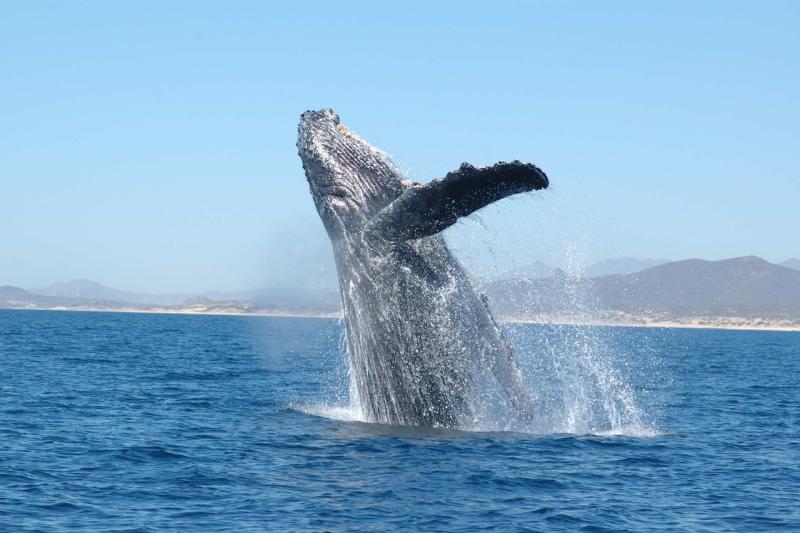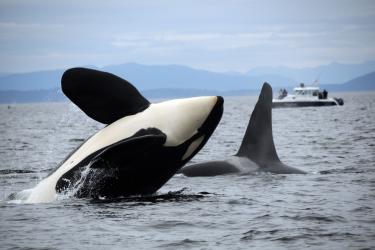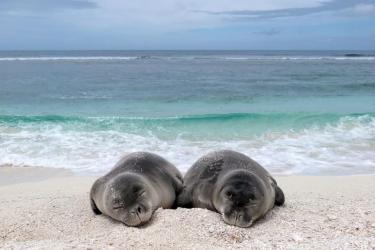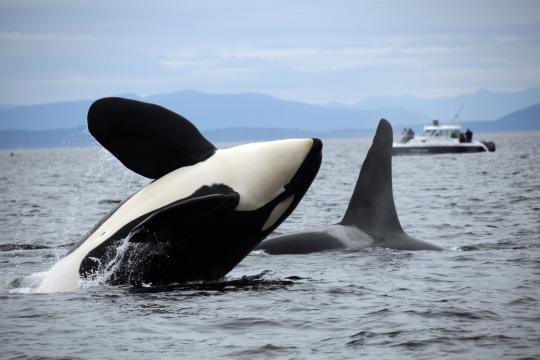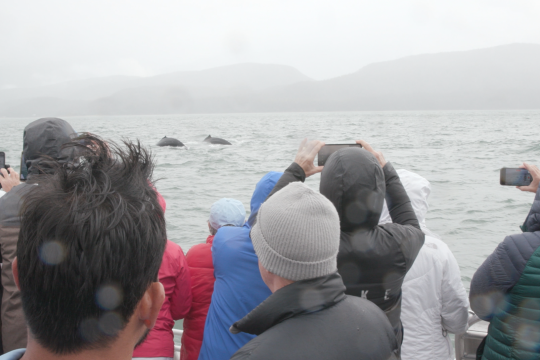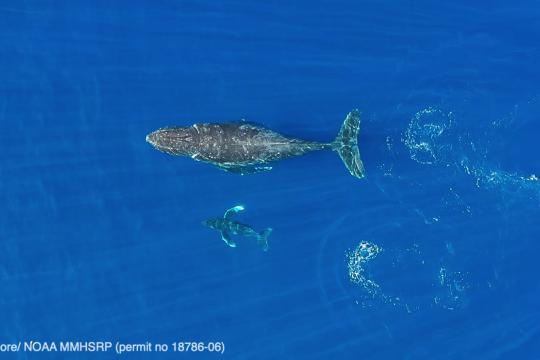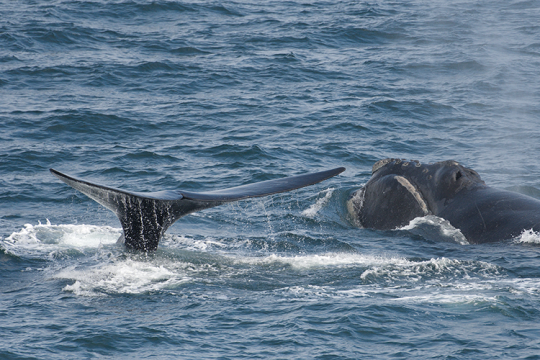The largest and oldest mammals on Earth, whales are found in every ocean of the world. Twenty-nine species of whales live in U.S. waters.
Saving the Southern Residents

Southern Resident killer whales are among the most at-risk marine mammals in the world. Noise and crowding by boat traffic, chemical contaminants, as well as a scarcity of their preferred food—Chinook salmon—pose serious threats to this endangered population.
Check out this story map to learn more.
Video: Spotlight on the North Pacific Right Whale

The eastern population of the North Pacific right whale is one of the most critically endangered large whales in the world. There are only about 30 left, but research in the summer of 2017 is shedding new light on this elusive creature.
Watch the video to learn more about the North Pacific right whale
Video: Species in the Spotlight—Cook Inlet Beluga Whale

Known as "canaries of the sea" because of the many different sounds they make, these white whales are highly social. The endangered Cook Inlet beluga whale is a NOAA Fisheries Species in the Spotlight. We are researching what threats are impacting this population the most in order to develop effective recovery strategies.
Watch the video to learn more about the Cook Inlet beluga whale
Video: Spotlight on the Southern Resident Killer Whale

The endangered Southern Resident killer whale is an icon of the Pacific Northwest. Watch this video to find out more about Southern Resident killer whales, the threats they face, and how we are studying them in this interview with NOAA Fisheries scientist Lynne Barre.
Welcome to Whale Week

Whales play a pivotal role in the marine environment and they are important sentinels of changes in our marine ecosystems. Chris Oliver, head of NOAA Fisheries, kicks off Whale Week 2018 by highlighting our work to recover them and sharing more about why these fascinating creatures grab our attention.
Learn more about our recovery efforts for three species in particular
Faces of North Atlantic Right Whale Conservation: Sofie Van Parijs, Acoustic Researcher

The past year has been devastating for North Atlantic right whales, whose population is already critically endangered with only 450 individuals remaining. At least 17 whales died in 2017, and one was found dead in January 2018, bringing the total to 18 known mortalities. Learn more about North Atlantic right whale acoustic monitoring in this Q&A with NOAA zoologist Sofie Van Parijs, who started NOAA’s Northeast passive acoustic research group in 2006.
Meet Sofie Van Parijs and dive deeper into her research
Faces of North Atlantic Right Whale Conservation: Mike Asaro, Entanglement Prevention Policy Expert

Entanglement in fishing lines attached to gillnets and traps on the ocean floor is one of the greatest threats to the critically endangered North Atlantic right whale. Mike Asaro, Ph.D., is the Marine Mammal and Sea Turtle Branch Chief of the NOAA Greater Atlantic Regional Fisheries Office. Learn more about his work with North Atlantic right whales and how NOAA, in coordination with the Atlantic Large Whale Take Reduction Team, is coming up with innovative technologies and policies to reduce gear entanglements.
Meet Mike Asaro and read more about entanglement prevention
Faces of North Atlantic Right Whale Conservation: David Morin, Disentanglement Coordinator

Fishing gear entanglement is one of the leading known causes of North Atlantic right whale deaths in the United States and Canada. Ropes or lines can cut into a whale’s body, cause serious injuries, and result in infections and mortality. Even if a gear entanglement does not ultimately result in death, it can cause severe stress to the whales, making it difficult for the animals to swim and feed, and reducing the likelihood that they will survive to reproduce.
Meet David Morin and learn more about right whale disentanglement efforts
Faces of North Atlantic Right Whale Conservation: Mendy Garron, Stranding Response Coordinator

Learn more about marine mammal stranding response and investigations for North Atlantic right whales in this Q&A with NOAA Marine Biologist Mendy Garron, who coordinates marine mammal stranding response activities along the East Coast from New York to Maine.
Meet Mendy Garron and learn more about right whale stranding response
A Quarter-Century of Counting: Celebrating 25 Years of Research on Gray Whales

NOAA scientists celebrate 25 years of research on gray whale calf production. Each spring since 1994, shore-based counts of gray whale mother-calf pairs have been conducted off central California. The dataset serves as a firm foundation for examining the interplay between changing environmental conditions and gray whale population dynamics.
Learn more about gray whale research
What You Can Do

Learn more about what you can do to help whales, such as:
-
Stay at least 100 yards away
-
Support companies that commit to using best practices and protecting the oceans, such as whale watching companies that participate in Whale SENSE.
-
Be a good neighbor. Recycle, reuse, dispose of garbage properly, and don't release balloons into the air. This will help prevent marine debris and keep the ocean clean and healthy.
Read more marine life viewing guidelines and what you can do to help
Woods Hole Science Organizations Collaborate to Involve Students in Real-time Whale Research in the Caribbean

An undergraduate research voyage in the Caribbean with SEA Semester presents a perfect opportunity for scientists from NOAA’s Northeast Fisheries Science Center to continue their research on humpback whales.
10 Wonderful Whale Facts

From the songs of humpbacks to the size of blue whales, take a look at this list to see if you learn something new about these majestic creatures.
Dive into these facts about whales
Wondrous Whales
